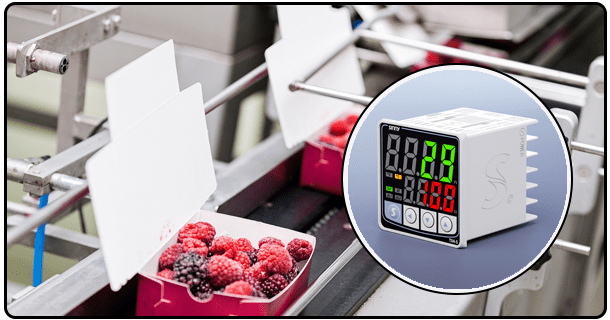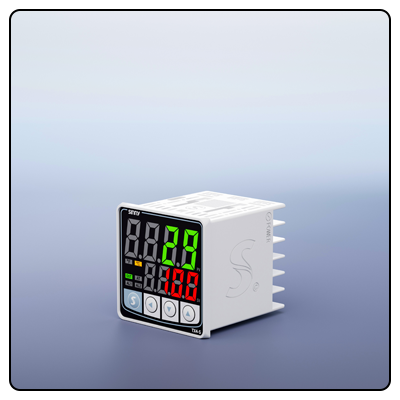How PID Temperature Controllers Work: Components, Mechanisms, and Applications
How PID Temperature Controllers Work: Components, Mechanisms, and Applications
"Discover how PID temperature controllers work, including their components, control mechanisms, and applications. Learn about the importance of tuning for optimal performance."
1. Introduction
PID (Proportional-Integral-Derivative) temperature controllers are sophisticated devices used to maintain desired temperatures within systems. PID controllers have become ubiquitous due to their ability to provide precise yet stable temperature management; hence their widespread adoption across applications and industries. Understanding how PID temperature controls operate is vital in optimizing performance while protecting safety in temperature-sensitive environments.
2. Basic Components
A PID temperature controller consists of three main elements, including the sensor, controller and control element.
1.
Sensor: The temperature sensors measure the actual temperature in your system. Common examples include thermocouples and Resistance Temperature Detectors (RTDs). These convert temperature into electrical signals which are easily read by controllers.
2.
Controller: The controller receives information from sensors and processes it using PID algorithm to make adjustments that bring temperature back within desired setpoint ranges.
3.
Warttembank Element (Control Element, or CE,): The control element such as a heater or cooler adjusts temperature based on signals sent from its controller, be that an on/off switch or complex device modulating power for precise temperature regulation.
3. PID Control Mechanism
A PID control mechanism comprises three elements - Proportional (P), Integral (I), and Derivative (D). Each plays an essential part in maintaining desired temperatures.
1.
Proportional Control (P): Proportional controls adjust output based on any current errors that exist between setpoint temperature and actual temperature; larger the error, greater is its effect; this helps bring it closer to setpoint faster.
2.
Integral Control (I): Integral control is designed to accumulate errors over time and correct them immediately to maintain setpoint temperatures by correcting even small, persistent errors that might linger - this means even small deviations will be addressed quickly to keep temperatures within range of their target values.
3.
darui Derivative Control (D): Derivative control anticipates future errors based on the rate of change of temperature. By modifying output accordingly, overshoot and oscillations are reduced, providing for a more steady temperature regulation system.
4. Working Principle
PID temperature controllers work by following four main steps - measurement, comparison, calculation and adjustment.
1.
Proper Measures: A temperature sensor detects and converts current system temperatures to an electrical signal for display on its display screen.
2.
Comparison: Once receiving sensor output data, the controller uses PID algorithm to compare it against desired setpoint values for any discrepancies that might exist between these and what was detected at their output sensor(s). Should there be discrepancies identified during comparison process. In such an event, any necessary adjustments will be calculated via PID calculation algorithm and made accordingly.
3.
Calculations: The PID algorithm interprets an error signal and calculates proportional, integral, and derivative adjustments needed to bring temperature back up to its setpoint temperature.
4.
Adjust: Once receiving the signal from its controller, the control element adjusts either heating or cooling accordingly in order to bring actual temperature closer to setpoint. This process continues until actual temperature equals that desired by controller.
5. Tuning a PID Controller
Tuning is key to ensuring optimal performance from PID controllers, with proper tuning ensuring they respond appropriately to changes in temperature while remaining at their setpoint without oscillation or overshoot.
1.
importance of Tuning: Tuning PID controllers properly is vital for efficient system performance and accurate temperature regulation. Insufficiently calibrated controllers may lead to instability, slow response times and incorrect temperature management resulting in inaccurate temperature controls and inaccurate temperatures being achieved by your system.
2.
Methods of Tuning: Tuning PID controllers requires using multiple methods, including Ziegler-Nichols method, trial and error as well as software-based tuning tools. Each of these has distinct advantages that should be evaluated depending on each application's requirements.
3.
Effects of Tuning on System Performance: Properly tuned PID controllers provide precise temperature regulation at reduced energy use and improved system efficiency; poorly tuned controllers on the other hand may result in wear and tear on equipment, higher costs for energy, reduced product quality or decreased overall efficiency.
Applications
PID temperature controllers have numerous uses ranging from industrial processes to consumer products.
Indoor Processes: PID temperature controllers can be found in industrial settings for applications including chemical manufacturing, food processing and
HVAC systems requiring precise temperature regulation in order to protect both product quality and safety.
6. Consumer Products:
PID temperature controllers can also be found in many household appliances like ovens, refrigerators and air conditioners to achieve consistent operation at desired temperatures and ensure optimal functioning. They utilize PID controllers in these appliances in order to achieve efficient temperature management that maximizes energy savings while simultaneously meeting desired performance objectives.
- How Temperature Controllers Work: Components, Types, and Application
- How Does a PID Temperature Controller Work: A Detailed Guide























